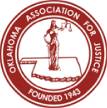
Ways to Prove Fault in Bicycle Accident Lawsuits
Proving fault is essential in your bicycle accident lawsuit, and can impact everything from pre-trial preparation to your settlement. Click here to learn more.
Every year according to the National Highway Traffic Safety Administration, around 45,400 bicycle accidents result in injuries across the United States, and hundreds of cyclists lose their lives. These crashes often leave victims with high medical bills, lost wages, and long recovery times. If someone else caused your accident, proving fault is essential to securing compensation.
At BDIW Law, we have decades of experience representing injured cyclists in Oklahoma. We know how to build strong cases and fight back against insurance companies that try to minimize payouts.
In this blog post, we’ll cover key ways to prove fault in a bicycle accident, from using police reports and accident documentation to medical records and expert testimony. Let’s get started.
What Is Negligence in a Bicycle Accident?
The first thing to say is that negligence is the legal basis for proving fault in a bicycle accident. It means that someone failed to act with reasonable care, leading to harm.
In these cases, the at-fault party is usually a driver who did not follow traffic laws or acted recklessly. However, negligence can also involve other factors, such as poorly maintained roads or defective bicycle parts. Common examples of driver negligence include:
- Distracted driving
- Speeding
- Failing to yield
- Driving under the influence
A driver who ignores a stop sign or drifts into a bike lane can be held responsible for the accident. In some cases, a government agency may be liable for dangerous road conditions, such as potholes or missing traffic signs.
To prove negligence, victims must show that the at-fault party:
- Had a duty of care
- Breached that duty
- Caused harm as a result
Gathering strong evidence is essential to holding them accountable and securing fair compensation.
Our Team Is Here To Assist You Every Step Of The Way.
SPEAK TO AN ATTORNEY TODAYPolice Reports and Accident Documentation
A police report is one of the most important pieces of evidence in a bicycle accident case. When an accident occurs, calling the police ensures that an officer documents key details, such as the:
- Time
- Location
- Parties involved
The report may also include statements from drivers, cyclists, and witnesses, along with the officer’s observations of the scene. If the officer determines that a driver violated traffic laws, this can strengthen your case.
In addition to the police report, gathering your own documentation is crucial. It’s beneficial to take photos of the accident scene as well as your injuries, and any property damage. If there are traffic cameras or surveillance footage from nearby businesses, this can provide additional proof of fault.
Witness statements also play a role in proving what happened. If possible, get contact information from anyone who saw the accident. Combining the police report with solid evidence increases the chances of proving negligence and securing compensation.
Traffic Laws and Violations
Traffic laws play a major role in proving fault, and here in Oklahoma, cyclists have the same rights and responsibilities as drivers, meaning that motorists must follow laws designed to protect them. When a driver violates these laws and causes an accident, they can be held liable for negligence.
Common traffic violations that lead to bicycle accidents include running red lights, failing to yield at intersections, speeding, and driving in designated bike lanes. A driver who turns without checking for cyclists or fails to stop at a crosswalk may be found at fault. If the police report cites a traffic violation, this can serve as strong evidence in your claim.
Cyclists must also follow traffic laws, such as riding in the correct direction and obeying signals. However, even if a cyclist shares some fault, they may still recover compensation under Oklahoma’s comparative negligence laws.
Medical Records and Injury Documentation
Medical records are critical in proving the severity of injuries after an accident. Seeking medical attention immediately ensures that injuries are properly diagnosed and documented. Delaying treatment can give insurance companies a reason to question the seriousness of your injuries or argue that they were caused by something else.
Medical records, including doctor’s notes, X-rays, and treatment plans, help establish the link between the accident and your injuries. Keeping records of follow-up visits and rehabilitation also strengthens your case.
In addition, photographs of visible injuries can provide further proof. Strong medical documentation increases your chances of securing full compensation.
Expert Testimony
Expert testimony can be a powerful tool in proving fault in an accident case. Here at BDIW Law, we work closely with trusted experts to:
- Analyze evidence
- Reconstruct accidents
- Provide professional opinions on what happened
Their testimony helps clarify complex details that may be disputed by insurance companies or defense attorneys.
We partner with accident reconstruction specialists who use physical evidence like skid marks and vehicle damage to determine how the accident occurred. Medical experts help explain the severity of injuries and their connection to the crash. Additionally, traffic safety experts may testify about road conditions or traffic laws.
By collaborating with these experts, we strengthen your case and provide objective insights that support your claim, making it harder for the other side to dispute fault. This professional approach maximizes your chances of receiving fair compensation.
Comparative Negligence in Oklahoma
As noted above, Oklahoma follows a comparative negligence rule, meaning that fault can be shared between parties in an accident. So, if a cyclist is found partially responsible, their compensation may be reduced by their percentage of fault. However, they can still recover damages as long as they are not more than 50% at fault.
For example, if a cyclist was not wearing reflective gear at night but a driver ran a stop sign, both parties may share responsibility. If the cyclist is found 20% at fault, their compensation will be reduced by that amount.
How to Secure Bicycle Accident Compensation
So, to sum up, if you’ve been injured in a bicycle accident, proving fault is crucial to securing the compensation you deserve. Whether it’s understanding bike crash causes, gathering evidence, or working with experts, having an experienced bicycle accident lawyer by your side can make all the difference.
At BDIW Law, we’re here to help you with your cycling injury claim. We have more than 65 years of combined legal experience and are a top-rated personal injury law firm. Our team has the skills and knowledge to help maximize your compensation.
Contact us for a free case consultation, and let us fight for the justice and compensation you deserve.








